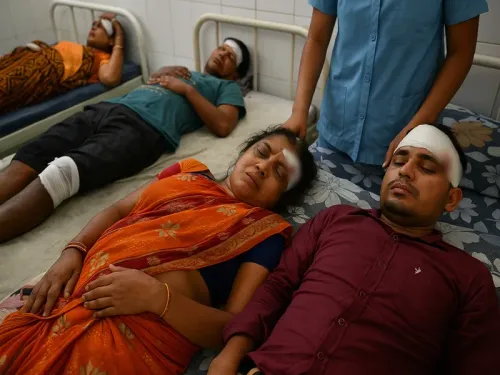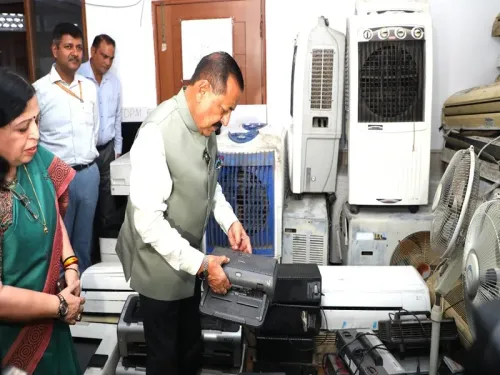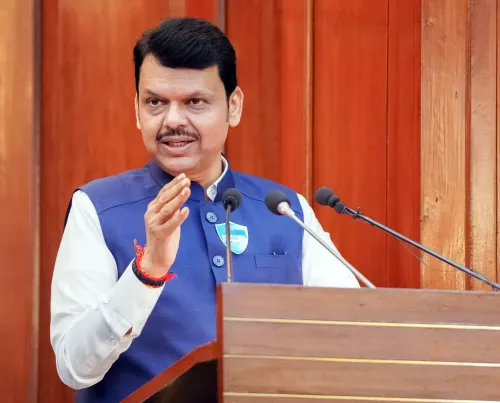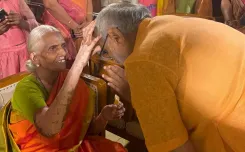How is Gujarat's Chief Minister Addressing Unseasonal Rainfall?

Synopsis
Key Takeaways
- Gujarat CM actively monitors rainfall impact.
- Ministers dispatched to worst-hit areas.
- District officials are coordinating relief efforts.
- Heavy rainfall recorded in multiple regions.
- Concerns raised among farmers regarding crop damage.
Gandhinagar, Oct 27 (NationPress) The Chief Minister of Gujarat, Bhupendra Patel, is actively overseeing the impact of the recent unseasonal rainfall and erratic weather patterns across the state.
The Chief Minister has maintained continuous communication with district collectors and the State Emergency Operation Centre to guarantee a swift response and effective relief initiatives.
In a decisive action, Patel has instructed senior cabinet ministers to visit the most affected districts and work closely with local authorities to facilitate on-ground operations.
Agriculture Minister Jitu Vaghani has been designated to oversee Bhavnagar, Tribal Development Minister Naresh Patel to Tapi, Forest and Environment Minister Arjun Modhwadia along with Social Justice and Empowerment Minister Pradyuman Vaja to Junagadh and Gir Somnath, while Minister of State Kaushik Vekariya will monitor the situation in Amreli.
The appointed ministers have been tasked with conducting meetings with district officials to evaluate relief efforts, and they are expected to personally assess the damages and immediate needs in the affected regions.
Earlier today, Chief Minister Patel convened a video conference with all district collectors to gather comprehensive updates on the rainfall intensity and weather forecasts.
He has also instructed the State Emergency Operation Centre to closely coordinate with district officials, ensuring rapid assistance and effective management of the situation.
Numerous areas in Saurashtra and South Gujarat experienced heavy unseasonal downpours in the last 24 hours, with Mahuva in Bhavnagar district receiving the highest rainfall of 195 mm.
According to reports from the State Emergency Operations Centre (SEOC), Shihor in Bhavnagar recorded 128 mm, while Songadh in Tapi saw 100 mm, and Jafrabad in Amreli, Una in Gir Somnath, and Umarpada in Surat each received over 90 mm.
Other locations that received significant rainfall include Sutrapada (79 mm), Rajula (77 mm), Palitana (76 mm), Dediapada (74 mm), Bhavnagar city (72 mm), and Jesar (67 mm). In total, 152 talukas across Gujarat reported rainfall, with 43 exceeding an inch.
Some regions in north and central Gujarat, such as Mehsana, Patan, Sabarkantha, and Aravalli, experienced lighter showers.
While the extensive rainfall has provided relief from the lingering heat, it has also resulted in waterlogging in several low-lying areas of Saurashtra.
With the monsoon season officially concluded, these unseasonal showers have raised new concerns for farmers regarding potential crop damage.









